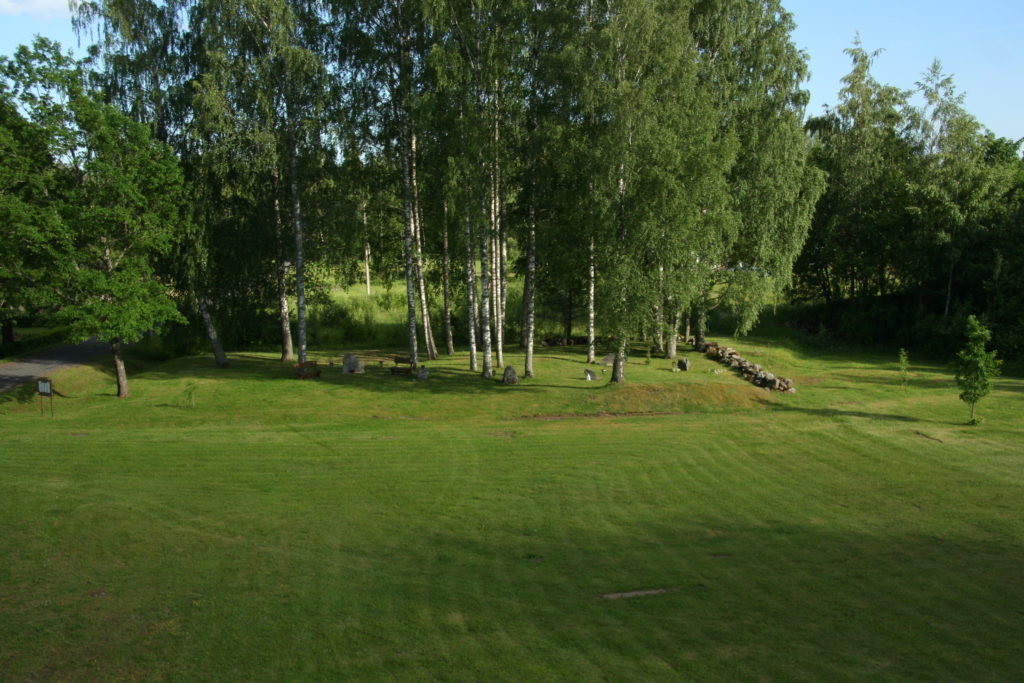What is Tudulinna
Tudulinna – it is much more than just a village in Virumaa. Between 1866 and 2017, the Tudulinna municipality (a village council during Soviet times) was up to 270 km2 in size (the area of the municipality was slightly different at times). In 1891-92, the municipality of Tudulinna was merged with the village of Lemmaku, formerly part of the rural municipality of Pagari. In 1893, Oonurme was also merged with Tudulinna.
In January 1939, the Tudulinna rural municipality had 2,078 inhabitants. At that time, the municipality consisted of the villages of Tudulinna, Kesavälja, Mõisaküla, Oonurme, Peressaare, Tagajõe, Metsküla, Sahargu, Kellassaare, Pärniku, Lemmaku and Rannapungerja. When the history of Tudulinna’s municipality came to an end in 2017, its population was just over 400 people. This sparsely populated area holds a wealth of cultural and natural sights worth a visit.
Honourable prayer house
In the centre of Tudulinna, on the high bank of Tagajõe, stands a seemingly mundane grey house with a long and dignified history. It was built as a prayer house at the beginning of the 19th century (according to some records in 1808) by the representatives of the Moravian Church, or Brotherhood movement. They had their own centre nearby, Võsumõis.
The activities of the Brotherhood gradually declined, but services were later still held in the prayer house in the 1930s, when the Congregation of Peace, which had separated from the Tudulinna congregation, met there. Later, when they completed their church (Tudulinna Church of Peace), the old prayer house was no longer needed. Fortunately, a new purpose was found – a woodworking workshop for the sovkhoz. Currently more than two centuries old, the building persists, though it has lost its original archaic appearance.
It is possibly the oldest remaining building in Tudulinna, depending on whether and how much of the old wooden church of Tudulinna consists of original parts from 1766 (and your take on the Ship of Theseus problem).
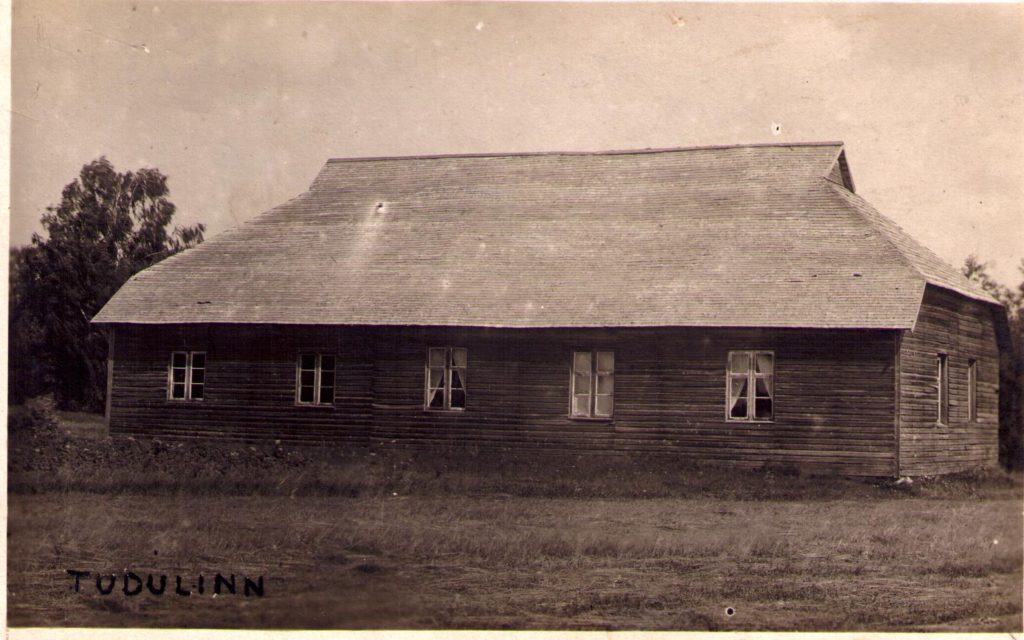
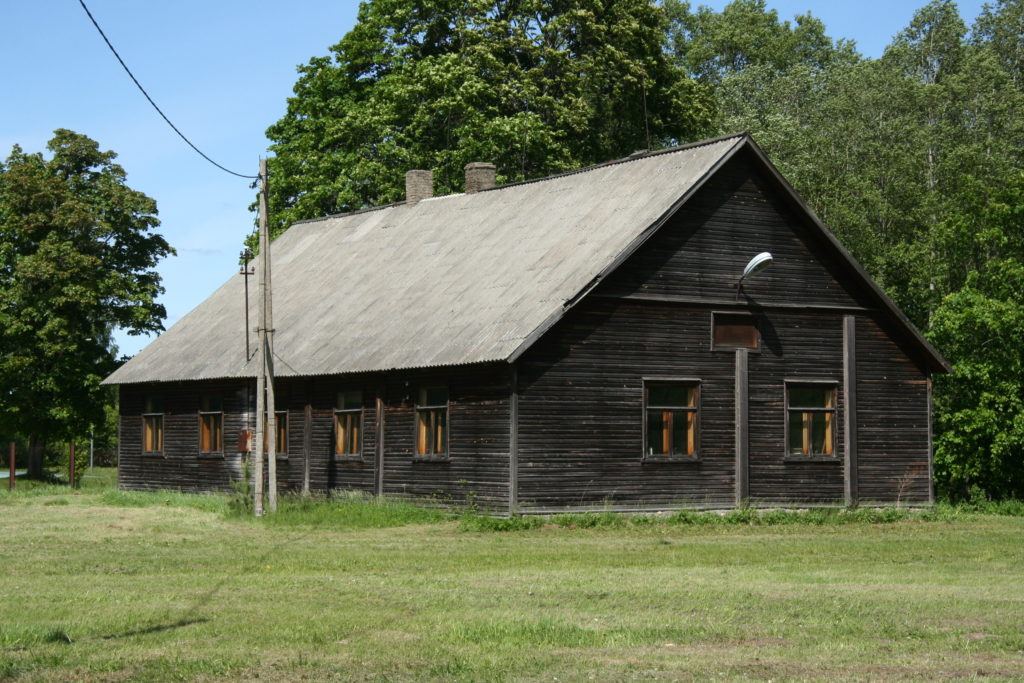
Schoolhouse
The founding year of Tudulinna School is considered to be 1845. The first lessons were held in the old farmhouse of the Altru farm, and the sexton Abel Mathiesen (1818-1892) was the school teacher. He is said to have made the children read the Bible and the Catechism while doing other work in the adjoining room. Children of different ages studied together. Already in 1868 there were 114 schoolchildren in Tudulinna and the locals had to start thinking about a separate schoolhouse.
In 1875 a wooden schoolhouse was completed at the same place as the present school. The first schoolhouse lasted until the beginning of the 20th century. In 1903-1904 a new single storey schoolhouse was built according to the project of A. Sudov and I. Zernov. It is currently the first floor of the present building. From 1932 to 1933 a wooden second floor was added and in 1960 a third attic floor was added.
In 1954 the former seven-grade school was reorganized into Tudulinna High School, at that time there were 151 students and 14 teachers. Due to a drop in the number of students they continued as an eight-grade school. In the end, there were fewer than 20 students in the Tudulinna school and pupils were taught in mixed classes.
Although recently renovated and in good condition, Tudulinna’s schoolhouse rang its bell for the last time in the spring of 2019.
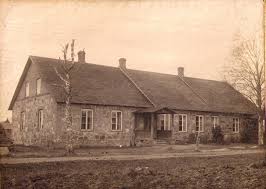
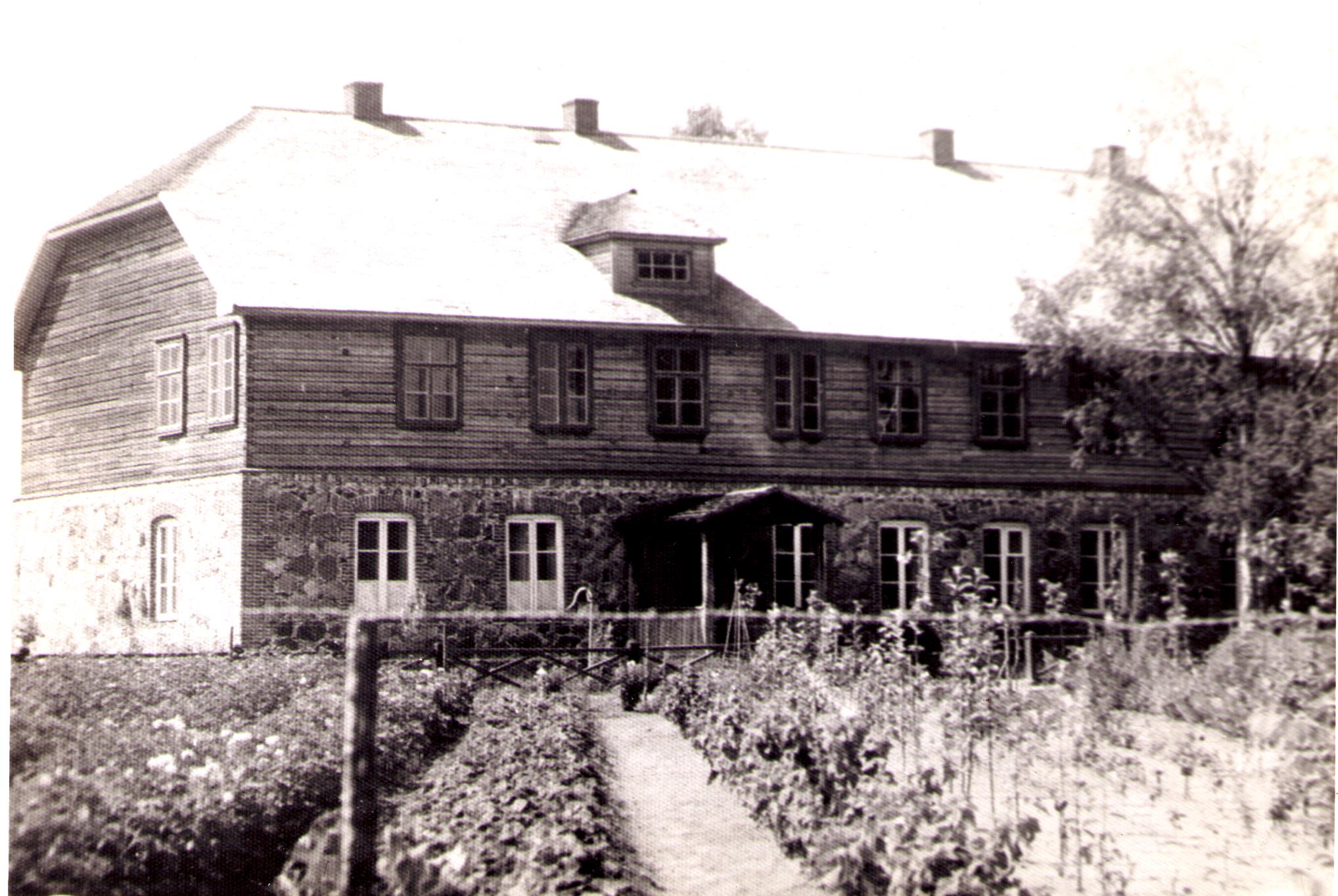
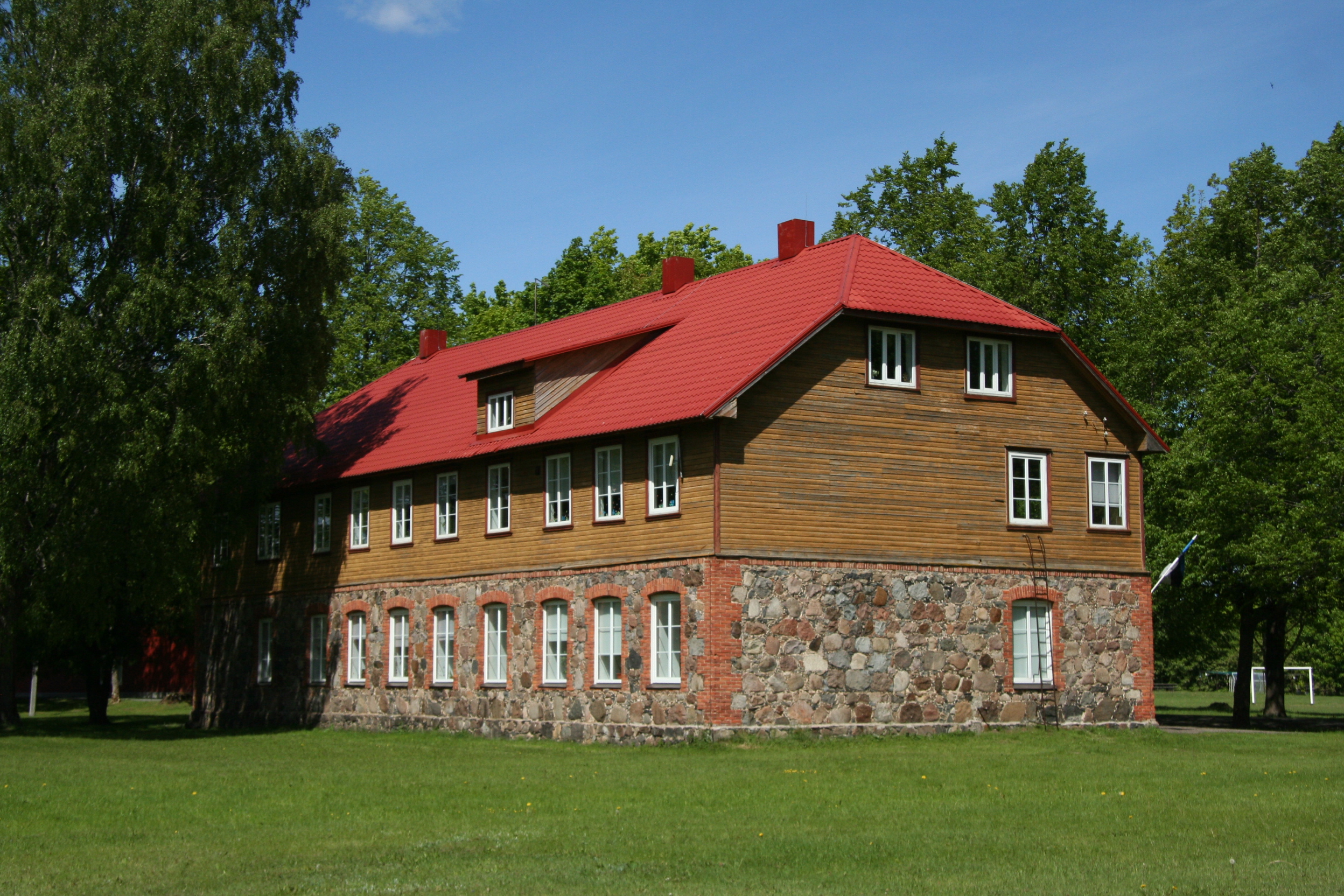
Church of Peace
When the Tudulinna congregation disintegrated in the mid-1920s during the religious quarrel, members of the congregation dissatisfied with Pastor Voldemar Kuljus of Iisaku began looking for other ways to meet for services. Initially, the separated church (called the Church of Peace) held its service at the Moravian Church’s prayer house. It was repeatedly suggested that the old wooden church be bought and repaired properly, but no agreement was reached with the Iisaku auxiliary church.
In 1938 they decided to build a new church. The plot was bought from Johannes Tamm, the owner of Möldri Farm. The project was commissioned from renowned architect Eugen Sacharias (1906-2002).
The Church of Peace is a remarkable building. First, it was rather old-fashioned in terms of its historicist architectural style, which already dated back decades when it was built. Differences between the Church of Peace and the Bethel Church of Tallinn, which was completed at the same time and designed by the same architect, are clearly noticeable. The old style was probably intentional, based on the conservative views of the Church of Peace.
Another feature is the position of the church. It has the traditional Christian east-west orientation, but reversed. The choir room (altar) is in the west and the tower in the east. This ironically untraditional decision may have been intended to literally turn the church’s back to the eastern Iisaku congregation, which was seen as having become too modern, in the form of Pastor Kuljus.
However, according to some records, the church was built “reversed” simply because it was a much better fit on the hillside of Linnamägi.
The Church of Peace was completed amazingly fast:
- August 10, 1938 – the Congregation of Peace discussed the issue of building a new church
- August 24, 1938 – it was decided to begin preparations for construction as a matter of urgency
- January 1939 – the first stones were shipped
- May 21, 1939 – the cornerstone was laid
- August 27, 1939 – a ceremonial party was held
- December 17, 1939 – the church was consecrated
One of the church’s chief attractions are the beautiful Dutch tiles on the inside of its walls. They were donated to the congregation by one of its leaders and financiers, Oskar Toomara, a long-distance ship captain from Tudulinna and chairman of the company AS Tallinna Laevaühisus. Unfortunately, the original stained glass windows created by Karl Hermann were destroyed, and have been replaced by glass paintings by the artist Rene Laas.
Currently, worship is held once a month at Tudulinna Church, which is served by pastor Avo Kiir.
The old tower bell of the Church of Peace dates back to 1645 (transferred from the old church) and the church’s other bell is from the 19th century.
The tower of the Church of Peace was damaged during World War II but soon repaired. An organ was brought from the old church after its closure. Prof. Hugo Lepnurm tuned the organ and found it to be excellent, but unfortunately it is no longer in working order.
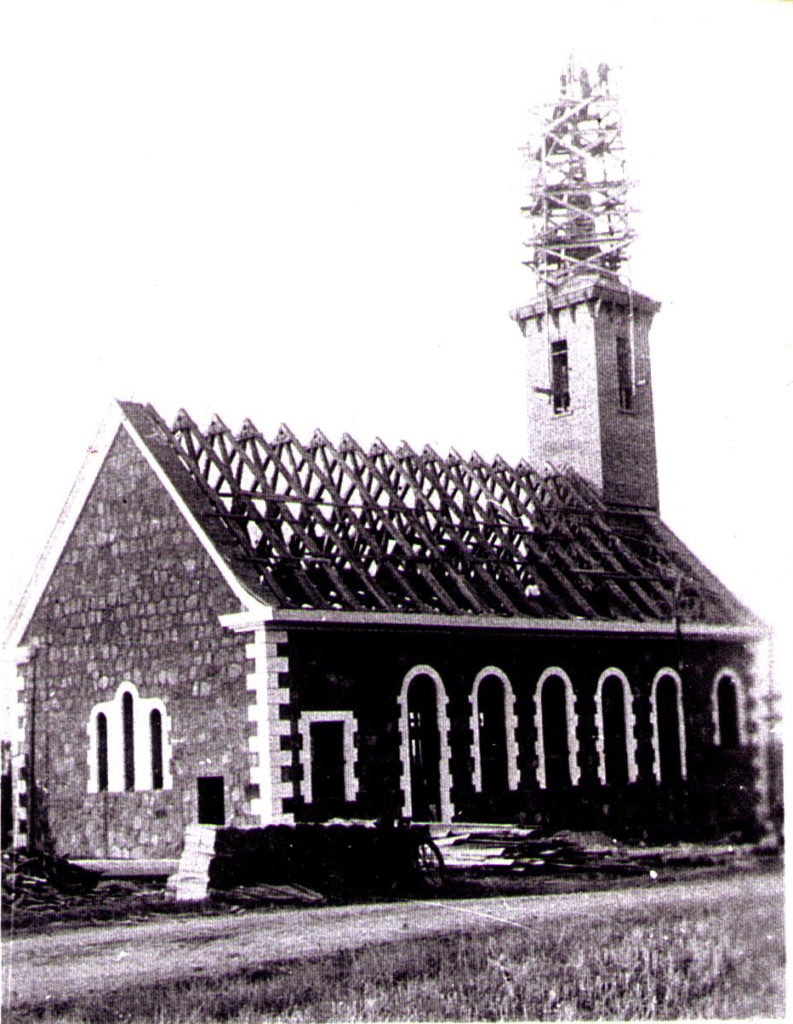
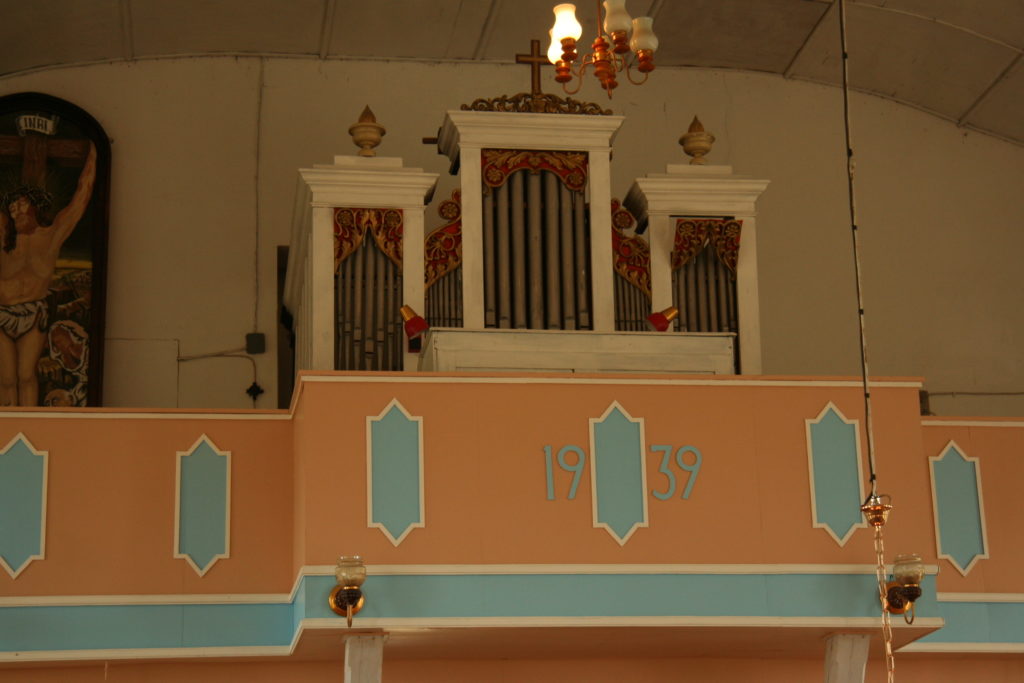
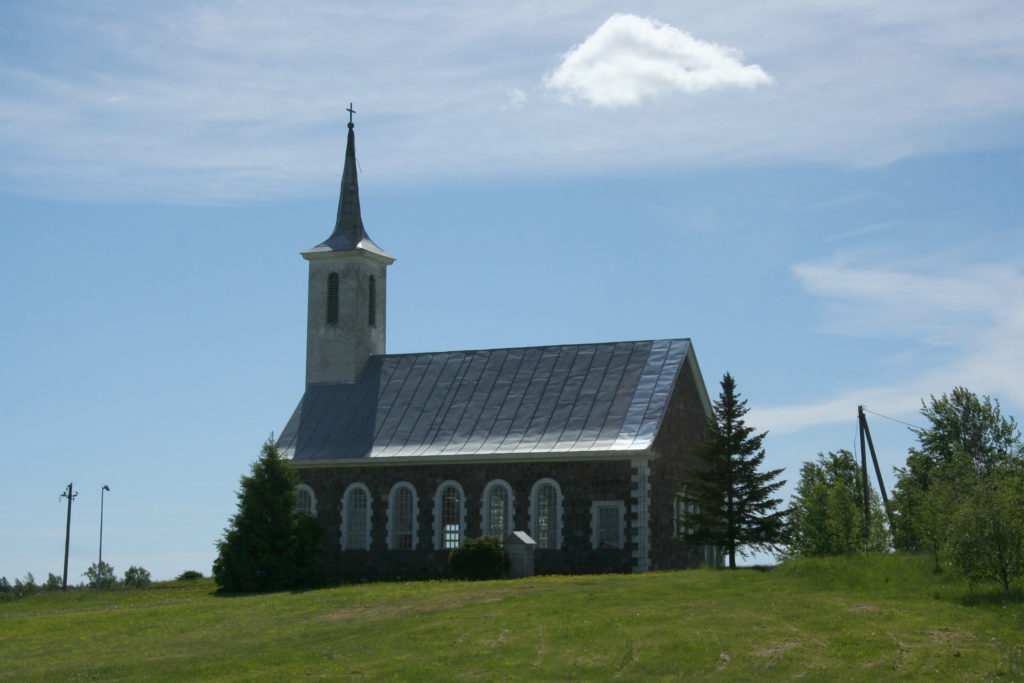
Möldri Windmill
At least 9 windmills (in addition to the windmills in Oonurme village) and several watermills are known to have existed around Tudulinna. Today, only the windmill of Möldri Farm on Linnamäe remains. It is the only wooden mill in Virumaa that has survived to this day.
The Möldri Mill was built in 1892 and worked using wind power until the end of World War II. After the farm owner and his family were deported, the mill remained in use at the sovkhoz. It was converted to electric power and was still used into the 1970s. The mill is well-preserved thanks to a major renovation conducted in the early 2000s. There are also a number of mechanisms left that allow visitors to see how the mill operated. There are plans to restore the mill in the near future.
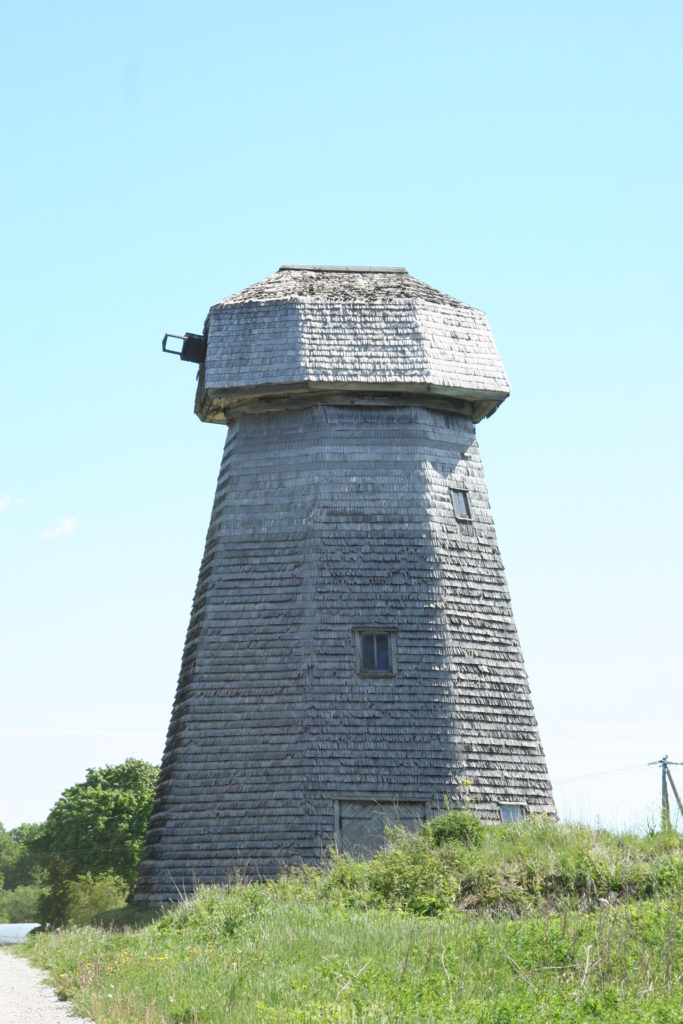
Cemetery and War of Independence memorial
The oldest burial sites in Tudulinna were on Linnamägi even before the construction of the old wooden church. In the 17th and 18th centuries, Tudulinna locals were buried near Lake Peipus, at the Chapel Hill of Rannapungerja. The current cemetery has been in use since the mid-19th century.
It is a compact, well-kept cemetery. The number of different iron crosses is noteworthy. It’s worth seeking interesting twin crosses and a special cross with an angel in the corner of the cemetery.
Although there are no grandiose burial sites for landlords, it was common in the 19th century for locals to give children German names such as Adelheid, Caroline, Franziska, Christoph, Diedrich and Reinhold, thanks to good relations with the local landlord. Seen in large numbers on the old crosses, these names belonged to ordinary farmers.
In the middle of the cemetery is a nice little chapel. In 2018, the gates of the cemetery were renovated.
In 1923, a memorial to the victims of the War of Independence was erected in the newest part of the Tudulinna cemetery. Sculptor Voldemar Mellik designed the figure of a grieving soldier on a high pedestal. The statue was destroyed by Soviet authorities in the autumn of 1940 and the pieces were buried. As the winds of freedom began to blow again, the remains were dug out. The pedestal was successfully reassembled and is thus original. The sculpture was restored by Ilme and Riho Kuld based on old photographs. The reopening took place on 6th October 1990.
The area surrounded by fir trees around the monument is also recognizable, although its edge was partially buried during the Soviet era.
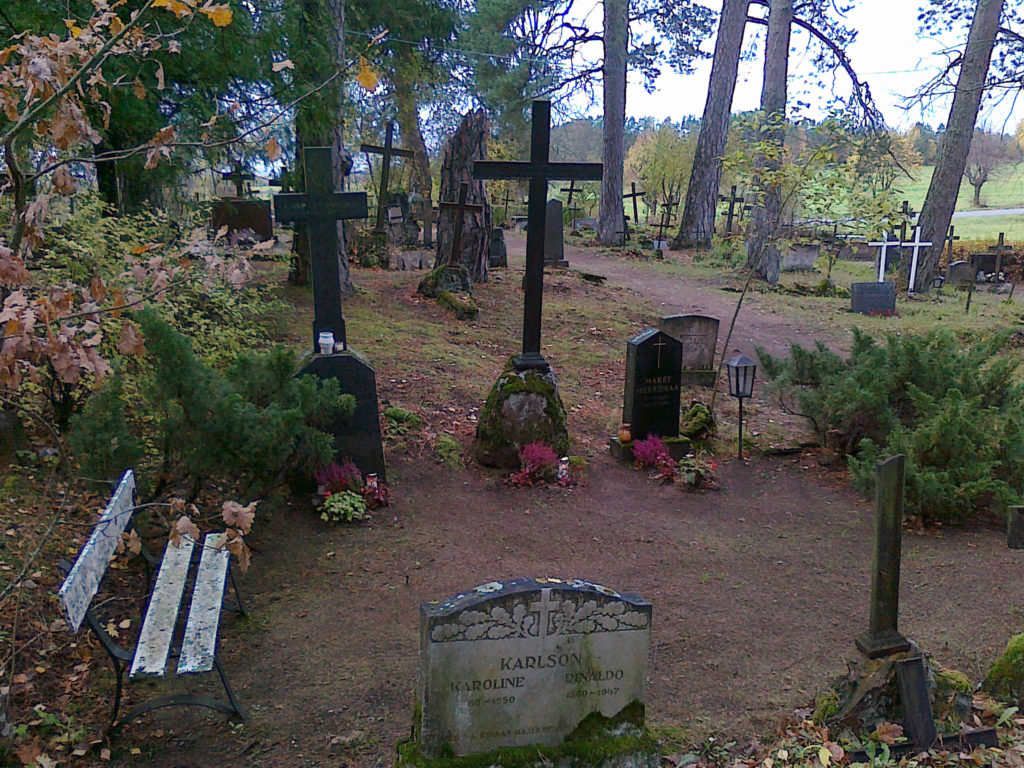
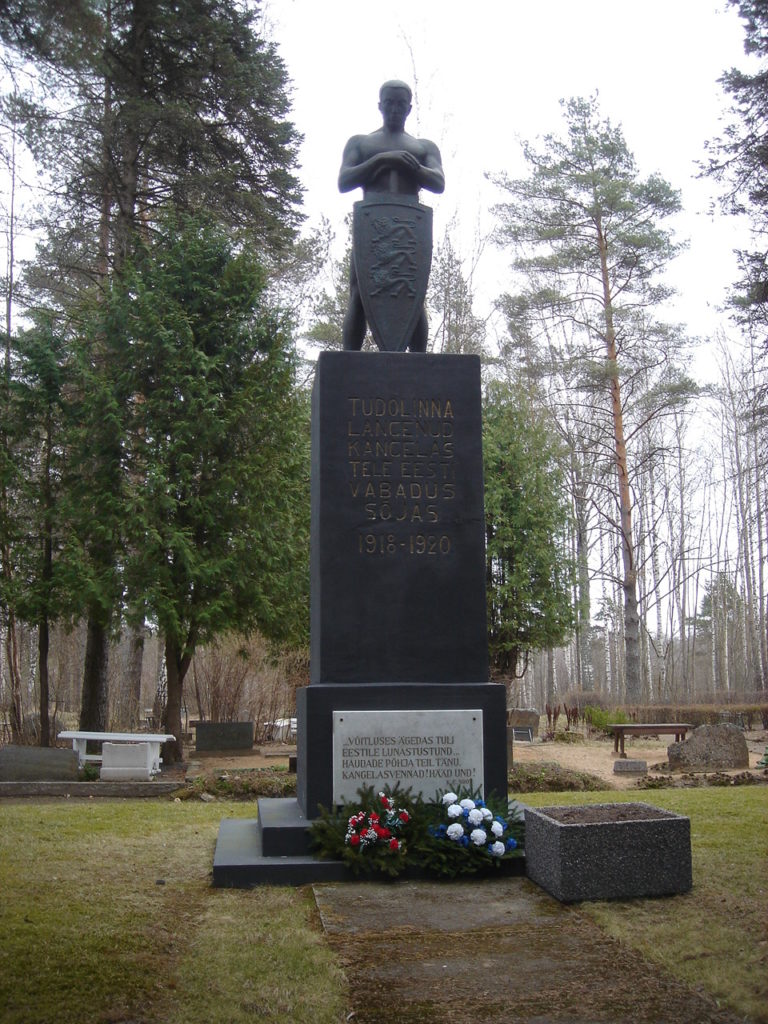
Hydroelectric power plant
The idea of the Tudulinna power plant dates back to the mid-thirties. The hydroelectric power plant is located north of the village of Lemmaku, on the Särjetõkke rapids portion of the Roostoja River, before it and the Tagajõgi merge into the Rannapungerja River.
The construction project was completed in 1947, led by engineer Endel Laansalu. The technical design of the power plant was drawn up by engineers L. Tepaks and A. Kõiv, while the electrical component and the substation were designed by V. Kark. Construction of the station began in 1947. The spillway and the main wall of the power station were completed in 1949. At the end of the same year, a generator arrived. The power plant turbines arrived in 1950. Along with the station, a residential building for the workers was completed. The power plant was in operation for ten years and stopped in 1960. In 1998, the plant was privatized and renovated, which allowed it to restart in 1999.
The building is of historical importance as part of the construction boom in the 1940s, and also illustrates the process of electrification of rural areas and its importance during the Soviet period.
The Tudulinna hydroelectric power plant was declared a cultural monument on 28th June 2016 as a complete complex, preserved with its original function from the 1940s, along with a dam and a pedestrian bridge. As such, it is a truly interesting sight for today’s hikers.
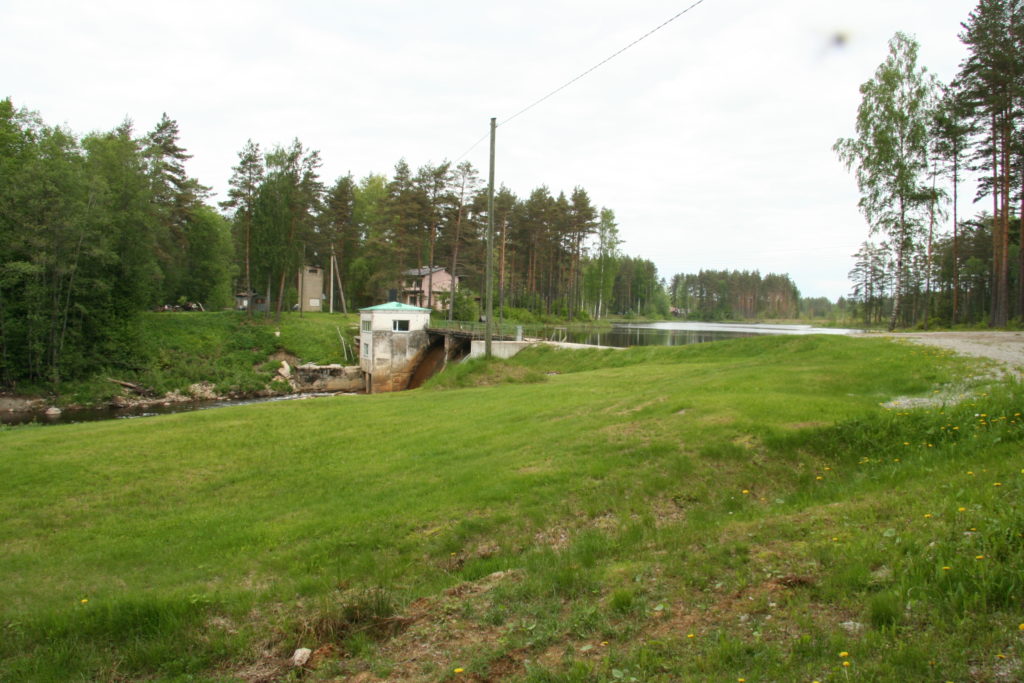
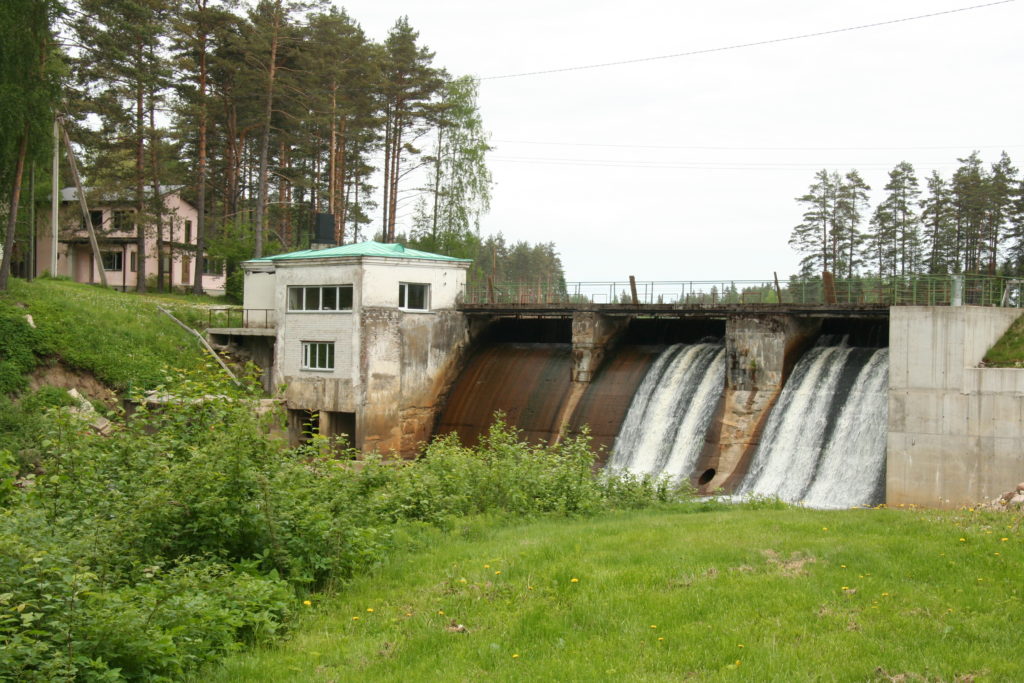
Järuska bridge in Lemmaku
The only covered bridge in Estonia was opened on June 28, 2013. The Järuska bridge is located in the village of Lemmaku on the Rannapungerja River. The 26.4 m long, 4.7 m wide and 6.7 m high bridge was designed by Illimar Kalk, the wooden part was constructed by OÜ Hobbiton and the work was conducted by NPO Vanaajamaja as an international workshop. The bridge is named after the nearby Järuska (Jeruska) farms.
Järuska bridge provides direct access between the farms of Lemmaku that are situated on both sides of the river. Across the bridge you will reach the Lemmaku forest road, which runs along the eastern shores of Rannapungerja and Roostoja rivers between beautiful pine trees.
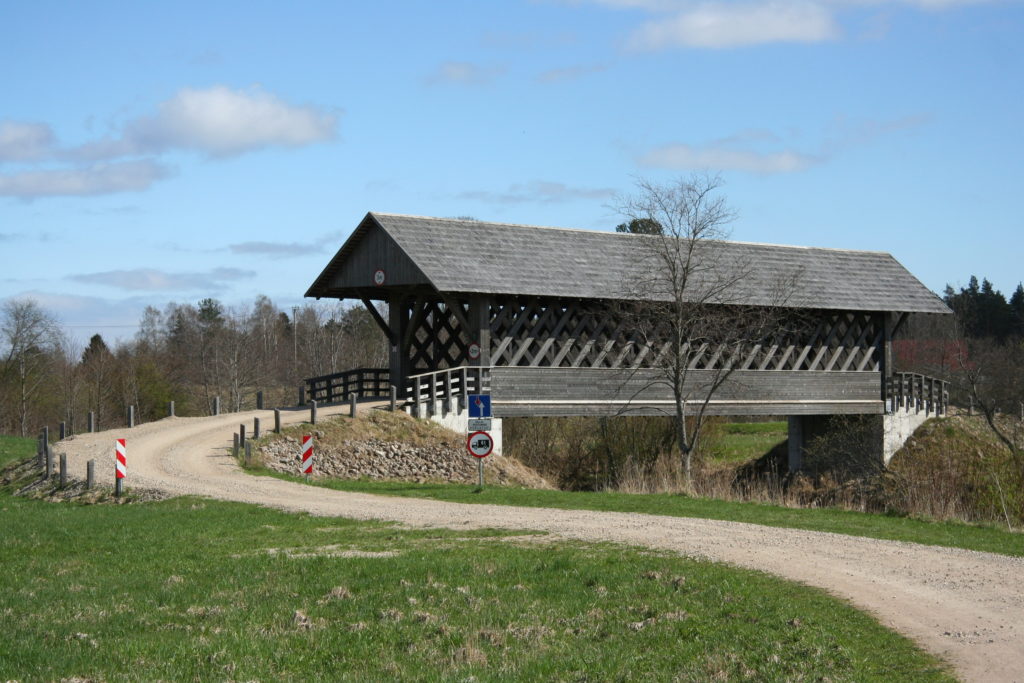
Peressaare
Peressaare is a village in Alutaguse municipality that was established as a settlement in the 1930s. Its name, “Family Island,” comes from its intention as a place for families with many children. Before the administrative reform of Estonian municipalities in 2017, the village belonged to the Tudulinna rural municipality. The village is located southwest of Oonurme and extends to the former Sonda-Mustvee railway.
Before the 1930s there were three farms in the village. Between 1933 and 1937, about 100 settlement farms were established there (85-120 according to different sources). The first Estonian female architect Erika Nõva was the designer of the new settlement and the author of the standard template for the settlement’s farms.
The total area of the settlement was planned to be 1700 hectares. The average farm size was based on the amount of land that could be worked by two horses (16-20 hectares), but 10-15 hectare single-horse-farms and 6-9 hectare farms were also planned. They were intended for those who were mainly engaged in non-agricultural activities such as making handicrafts.
In 1933, the construction of houses began. By 1935, the first 18 houses were ready for their new settlers. “Composite buildings” were built on the village’s plots, with living spaces under the same roof as a barn and a utility room. The buildings were designed so that they could later be expanded. The settlers also received a couple of hectares of new soil, although they had to clear the forest covering their future farmland and pastures. According to some data, bricklayers and carpenters from Mustvee carried out the construction work. Prison labour was used for forest and land improvement as well as for the production of cement on site.
Residents from elsewhere in Virumaa, as well as Petserimaa, Võrumaa and Tartumaa came to Peressaare. Võrumaa had the highest number of migrants as the region was the poorest in terms of land available for settlement. Settlers were given fifty years to pay off the cost of the land and buildings, as well as the farm tools, animals, and seeds, but did not have to pay for the first five years.
In 1937, the cornerstone was laid on the six-class schoolhouse of Peressaare, which was also designed by architect Erika Nõva. It was very modern for its time with central heating and its own water supply. In 1938, studies began. At its busiest, the school had 170 students at a time. The stylish building has now been in ruins for decades.
Peressaare is now quite empty, but in its time it was a large village with two shops, a brick factory, a leather dresser and a schoolhouse. Most of the settlements are destroyed and the fields have become overgrown. However, there are still few buildings left and it is possible to make out the settlement’s layout. The forest road now runs along the former railway.
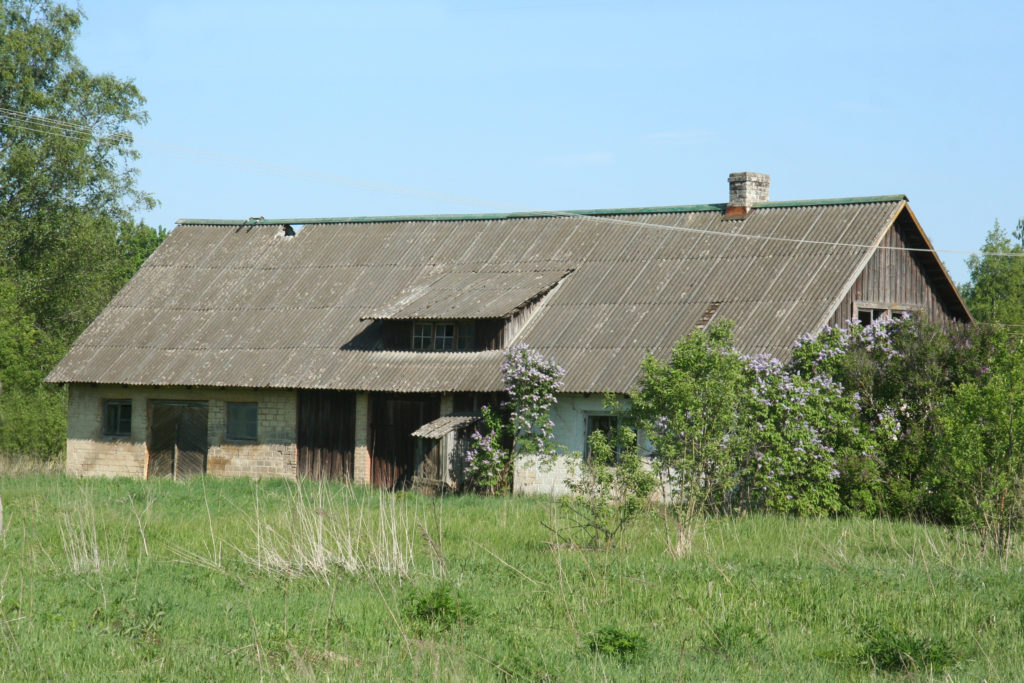
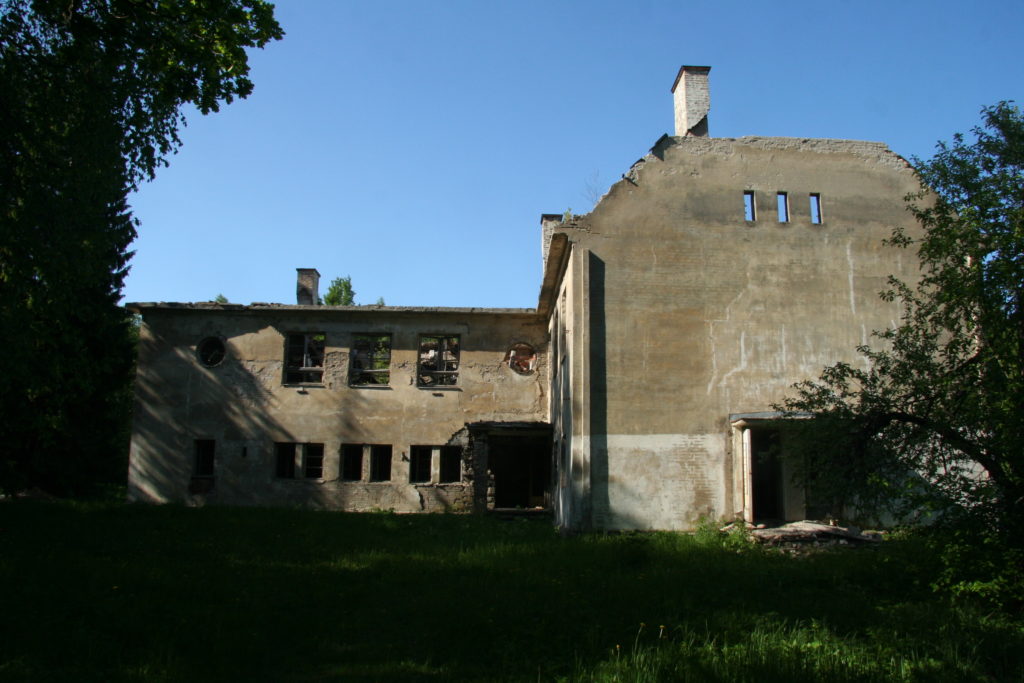
Park of memories
The Tudulinna Singing and Playing Society (founded in 1892) built a cultural centre near the schoolhouse in 1898. It was meant for hosting events and became the centre of the village’s cultural life for many decades. Due to negligence, the building burned down in 1957 and was never restored, but a new cultural centre was built on the village’s central crossroads.
Where the cultural centre once stood, a park with memorial pillars and named benches was designed to commemorate well-known Tudulinna locals in the early 2000s. For example, there are memorial stones for academician Adolf Mölder from Lahepere farm, and the first local schoolmasters from the Mathiesen family.
